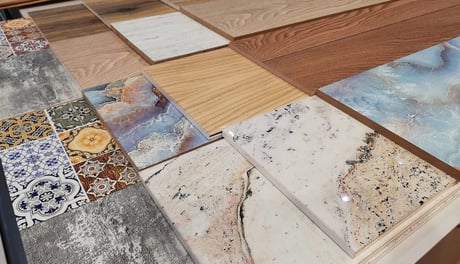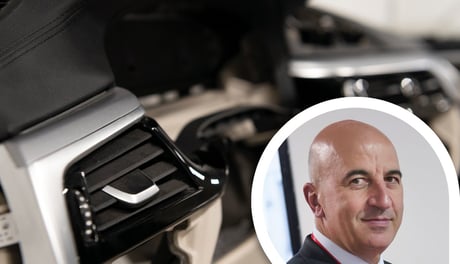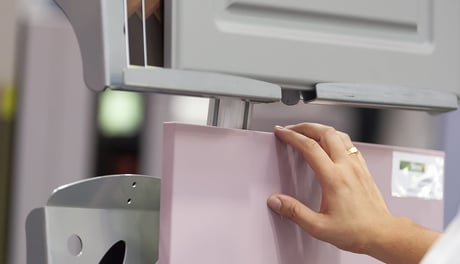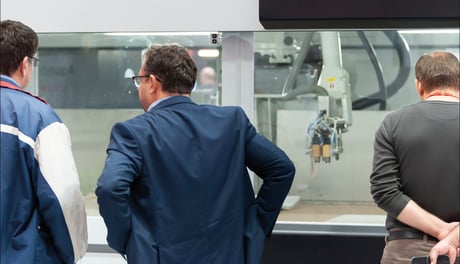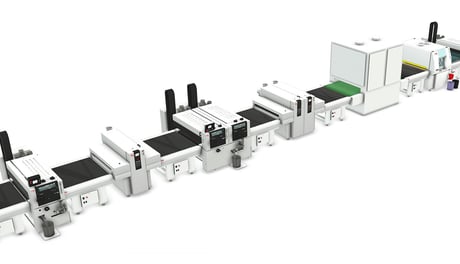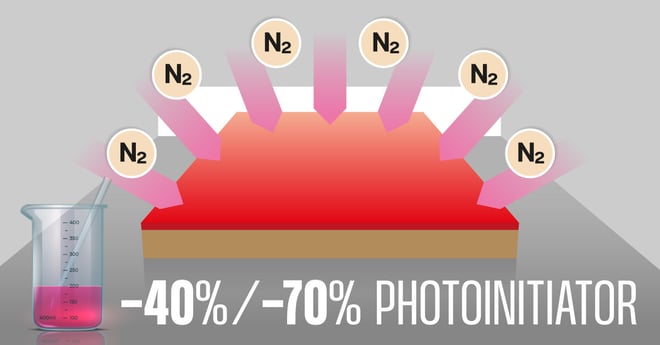
UV technology and sustainability: a viable combination
UV technology is an innovative paint drying solution guaranteeing shorter drying times and greater energy efficiency. However, one of the main obstacles to the widespread adoption of this technology is the use of photoinitiators, which can be harmful to the environment and to human health. Fortunately, UV technology and sustainability can now be combined by minimising the use of photoinitiators.
UV drying can be made more sustainable by minimising the amount of photoinitiators used, as well as by decreasing energy consumption or reducing the use of mercury (present in UV lamps).
Thanks to UV technology, it is possible to obtain much faster drying times than traditional solvent-based or water-based drying systems, and it is for this reason that this solution is now increasingly popular.
Reduced photoinitiator use: environmental and health benefits
Reducing the use of photoinitiators implies a number of advantages for both the environment and human health. Photoinitiators are chemical compounds that can damage human health if inhaled or in contact with the skin. Additionally, once released into the environment, they can persist for a long time and cause pollution.
By using 100% UV paints with a reduced amount of photoinitiators, the risk of exposure to harmful substances is significantly reduced. This is particularly important for workers in the painting industry, who may be exposed to these substances on a daily basis. Reducing the amount of photoinitiators needed also contributes to preserving the environment, reducing pollution and the potential damage to ecosystems.
Innovation in UV drying: use of nitrogen
A major breakthrough in UV drying: use of nitrogen. Our UV-I oven allows nitrogen to be used to reduce the environmental impact. In this way we can reduce the amount of photoinitiators used, reduce the energy requirements of the cross-linking oven and minimise the impact of mercury by using fewer crosslinking lamps.

In each of the previously listed cases (or combinations of them), while reducing the amount of oxygen inside the oven, we are still able to guarantee perfect (and in some cases even superior) drying of the workpieces.
Future outlook: trends and developments in sustainable UV drying
Sustainable UV drying is a growing trend in the painting industry. Companies are increasingly aware of the importance of reducing their environmental impact and improving the health of their workers. Environmental regulations are becoming increasingly strict, encouraging companies to seek sustainable solutions for their paint-finishing processes.
In conclusion, UV-I drying is a valuable, eco-friendly solution for reducing mercury and photoinitiators requirements, improving environmental sustainability in the painting industry. Thanks to the use of nitrogen, it is possible to protect operators' health and safety with a lower impact on the environment.
Looking to future scenarios, further development of increasingly sustainable and high-quality UV drying technologies and materials is to be expected.

